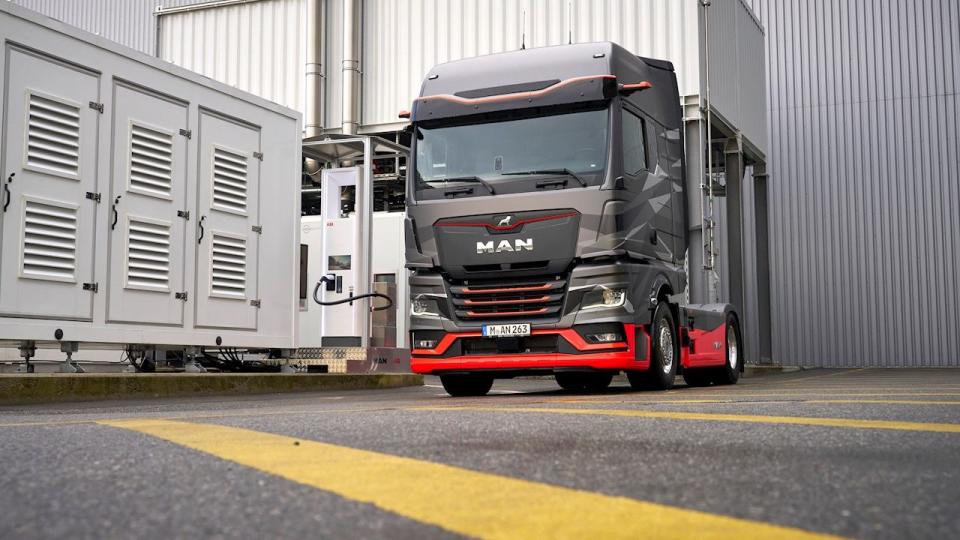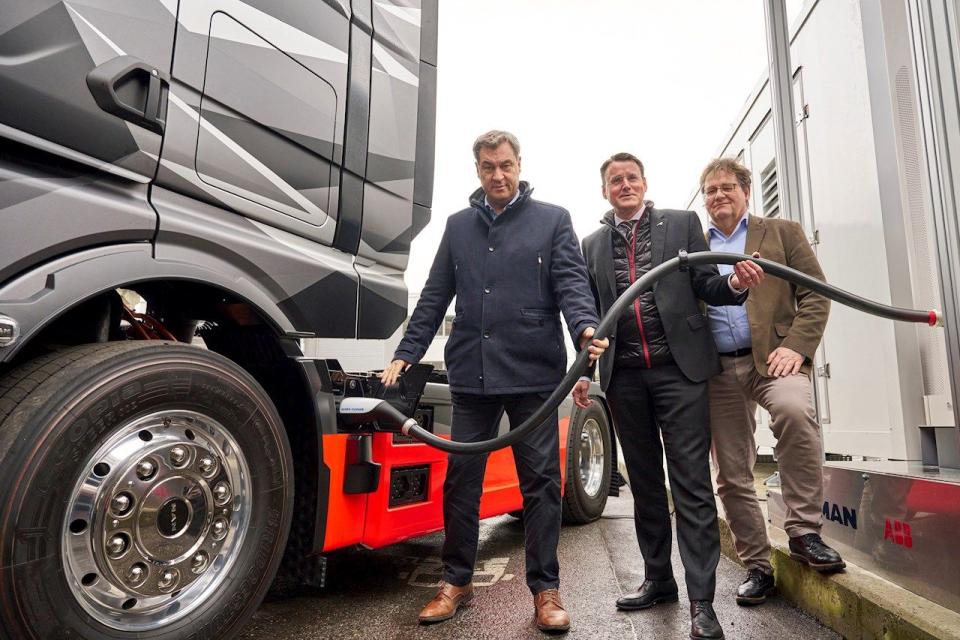Megawatt Charging Is on the Way for Heavy Trucks

ABB E-mobility and MAN trucks demonstrate Megawatt Charging System (MCS) in Germany, aimed at trucks and buses.
The MCS itself will be capable of charging vehicles at up to 3.75 MW, cutting the time needed to recharge vehicles with large batteries.
A network of megawatt charging stations is being planned in Europe, but there is plenty of uncertainty over the trucking industry's adoption of long-distance electric trucks, as well as other issues.
In the EV charging industry the focus is still on delivering faster speeds, with a number of manufacturers jockeying for position when it comes to how many minutes it takes to get an EV battery from 20% to 80%, in addition to other metrics.
Entire startups have made improving charging speeds their main goals, while others tinker with solid-state battery compositions, hoping for a breakthrough.
But not all of the focus when it comes to charging speeds is aimed at consumer vehicles, even though it's one of the main driving forces behind the rush for faster charging.
Truck manufacturers also recognize that if large trucks were to go electric at some point in the near future, they would need much faster charging in order to compete with traditional diesel models.
Just what that kind of charging will look like was recently demonstrated as ABB E-mobility and MAN Truck & Bus unveiled their Megawatt Charging System (MCS) in Germany.
The prototype station, developed by ABB E-mobility, charged a MAN eTruck at 700 kW and 1000 amperes. But the station itself is designed for even faster charging speeds of up to 3.75 MW at 3000 amperes.

ABB E-mobility noted that current stations equipped with CCS chargers can only deliver about 400 kW at 500 amperes, and of course very few EVs can even take advantage of such charging power.
"The fact is, a lot of energy is needed for MCS charging," ABB E-mobility points out. "When so much electricity is flowing, the infrastructure behind the visible charging points, the grid connections and the space requirements, e.g. at motorway service stations, car parks or truck stops, play a key role."
Faster charging for large trucks isn't the only goal of the MCS system, as the shift to electric buses—already under way in several European cities—will also drive the demand for more charging stations of this type.
There are costs to megawatt charging systems, with electric buses currently relying on a higher number of charging sessions at more modest speeds using cords or pantographs.
At the moment ABB E-mobility and the CharIN consortium are finalizing the MCS standard with plans for 30,000 MCS charging stations on the continent by 2030. It's an ambitious target, especially given that electric semitrucks are only now starting to arrive on the market in any significant number.
There is still plenty of uncertainty over just how quickly the trucking industry in Europe can make the transition to electric trucks, even with plans for several charging corridors with megawatt stations.
There are also valid concerns over just where the power for such a large network of stations will ultimately come from in the coming years.
"With MCS, sustainable long-distance transport with trucks and buses will be possible in the near future. We have proven that today." said Michael Halbherr, CEO of ABB E-mobility. "Even if we are still showing a prototype here: With the new MCS standard, we have not only doubled the amperage but also the charging capacity within just a few years."
But it's also clear that diesel trucks will not disappear overnight, especially in regions outside northern Europe where a focus on EV trucks exists currently.
"Grid expansion and the digitalization of the grids are not only essential for the future supply of renewable energy, but also a prerequisite for the charging infrastructure," ABB E-mobility adds.
Megawatt charging stations are also being developed in the US, which faces its own hurdles in making electric semitrucks and cargo transport a reality, with most of the efforts being focused on port settings and drayage operations.
Will electric semitrucks become more common in the second part of this decade, or will this process take much longer in the US? Let us know what you think.

 Yahoo Autos
Yahoo Autos 